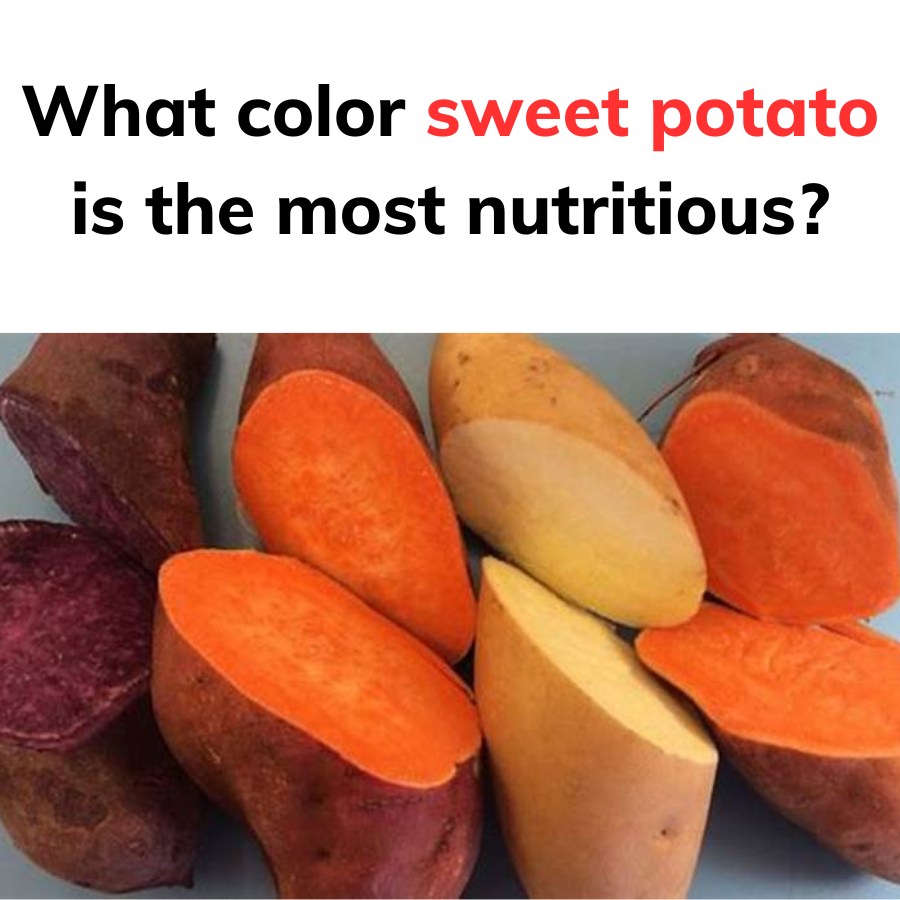Sweet potatoes are not just delicious—they’re also packed with essential nutrients that fuel your body and support your overall health. Whether you enjoy them roasted, boiled, or baked, this root vegetable is a powerhouse of vitamins, minerals, and antioxidants. In this article, we’ll explore why sweet potatoes are such a healthy choice, the nutritional differences between various colors of sweet potatoes, and the best ways to store them to keep them fresh and nutritious.

Why Sweet Potatoes Are a Nutritional Powerhouse
Sweet potatoes are a fantastic source of complex carbohydrates, offering your body sustained energy throughout the day. According to the US Department of Agriculture, a medium-sized cooked sweet potato contains:
- 23.6 grams of carbohydrates (8% of your daily needs)
- 103 calories
- 0 fat or cholesterol
Beyond carbs, sweet potatoes are loaded with fiber, which is essential for digestive health. Fiber helps keep your gut healthy, prevents constipation, and supports regular bowel movements.
They also provide a variety of important nutrients, including:
- Vitamins: A, B6, and C
- Minerals: Potassium, manganese, magnesium, and copper
- Magnesium for Mental Health: With 30.8 milligrams of magnesium per sweet potato, this nutrient plays a key role in nerve transmission, muscle contraction, and even managing anxiety. According to Nutrition magazine, magnesium is essential for preventing and treating neurological disorders.
Clearly, sweet potatoes are more than just a comfort food—they’re a nutritious addition to any diet.
The Nutritional Differences Between Sweet Potato Colors
Did you know that the color of a sweet potato can affect its taste, texture, and nutritional content? Here’s a breakdown of the main varieties and what makes them unique:
Orange-Fleshed Sweet Potatoes
- Taste and Texture: Sweet and firm on the inside, making them perfect for mashing or baking.
- Nutritional Highlight: Rich in carotenoids, which give them their vibrant orange color.
- Health Benefits: Carotenoids are a source of vitamin A, which is essential for eye health, a strong immune system, and preventing conditions like Lou Gehrig’s disease (ALS). Just one orange-fleshed sweet potato provides 730% of your daily vitamin A needs.
Purple Sweet Potatoes
- Origins: Originally from Okinawa, Japan, these have become popular worldwide for their creamy texture and subtly sweet flavor.
- Nutritional Highlight: High in anthocyanins, natural flavonoids that give them their purple color.
- Health Benefits: Anthocyanins are powerful antioxidants with anti-inflammatory, anti-bacterial, and anti-cancer properties. They also support cardiovascular health and may prevent obesity and diabetes.
White-Fleshed Sweet Potatoes
- Taste and Texture: Drier and less sweet compared to orange or purple varieties.
- Nutritional Highlight: Lower in antioxidants compared to orange and purple sweet potatoes.
- Health Benefits: While they contain fewer carotenoids and anthocyanins, white sweet potatoes still provide essential nutrients and are a good source of energy.
Why Antioxidants in Sweet Potatoes Matter
Antioxidants are a critical part of what makes sweet potatoes so healthy. They fight free radicals in your body, reducing oxidative stress and inflammation. Let’s break down the key antioxidants found in sweet potatoes:
- Carotenoids (Orange Sweet Potatoes): These yellow and orange pigments strengthen the immune system, improve eye health, and support skin health. Beta-carotene, lutein, and zeaxanthin are the most common carotenoids.
- Anthocyanins (Purple Sweet Potatoes): Found in red, purple, and blue fruits and vegetables, anthocyanins are known for their powerful anti-inflammatory and anti-cancer properties. Studies show that purple-fleshed sweet potatoes have the highest antioxidant content compared to other varieties.
If you’re looking to boost your antioxidant intake, purple sweet potatoes are your best bet.
How to Store Fresh Sweet Potatoes Properly
Storing sweet potatoes the right way is crucial to preserving their flavor and nutritional value. Improper storage can lead to spoilage or nutrient loss, so follow these tips:
Do Not Store in the Refrigerator
Refrigerating raw sweet potatoes can change their cell structure, making the core harder and the texture less enjoyable. Instead, opt for a cool, dark, and dry environment.
Tips for Storing Raw Sweet Potatoes
- Keep them in a dark, cool place away from sunlight and moisture.
- Avoid storing them near heat sources, as high temperatures can cause sprouting.
- Wrap them in newspaper or place them in a cardboard box lined with paper to extend their freshness.
- For long-term storage, you can bury raw sweet potatoes in dry sand with the tops facing outward to prevent sprouting.
Separate Sweet Potatoes from Regular Potatoes
Storing sweet potatoes with regular potatoes can accelerate spoilage, so keep them apart for maximum shelf life.
How to Store Cooked Sweet Potatoes
If you’ve already prepared your sweet potatoes, here’s how to store them safely while maintaining their flavor and nutritional value:
- Boiled Sweet Potatoes: Use within two days for optimal taste and nutrition.
- Peeled Fresh Sweet Potatoes: Store in an airtight container in the refrigerator for 4–5 days.
- Sliced Sweet Potatoes: Place in water and refrigerate for up to two days. However, for the best flavor, it’s recommended to cook them immediately after slicing.
- Cooked Sweet Potatoes: Store in a zip bag or a sealed plastic container in the refrigerator. Properly stored, they can last up to five days.
By following these tips, you’ll always have fresh and flavorful sweet potatoes ready to enjoy.
Sweet Potatoes and Eye Health
One of the standout benefits of sweet potatoes is their impact on eye health. Whether you’re munching on orange or purple sweet potatoes, your eyes will thank you.
- Vitamin A: Orange-fleshed sweet potatoes are packed with beta-carotene, which the body converts into vitamin A. This essential nutrient prevents dry eyes, reduces the risk of night blindness, and supports overall eye health.
- Anthocyanins: Purple sweet potatoes contain anthocyanins, which have been shown to improve visual acuity and protect against age-related eye diseases.
If you want to keep your eyesight sharp, incorporating sweet potatoes into your diet is a smart choice.
Conclusion: Sweet Potatoes Are a Delicious and Nutritious Superfood
Sweet potatoes aren’t just a tasty addition to your meals—they’re a nutritional powerhouse packed with complex carbohydrates, fiber, vitamins, minerals, and antioxidants. Whether you prefer the sweet, firm texture of orange-fleshed sweet potatoes or the creamy richness of purple varieties, you can’t go wrong. They’re versatile, easy to cook, and provide a wealth of health benefits, from supporting digestion to improving eye health and fighting inflammation.
To maximize their shelf life, follow proper storage tips for both raw and cooked sweet potatoes. And remember, the vibrant color of your sweet potato isn’t just for show—it’s a sign of the antioxidants working hard to keep you healthy.
So, the next time you’re looking for a nutritious, energy-boosting ingredient, reach for a sweet potato. Your taste buds—and your body—will thank you!


